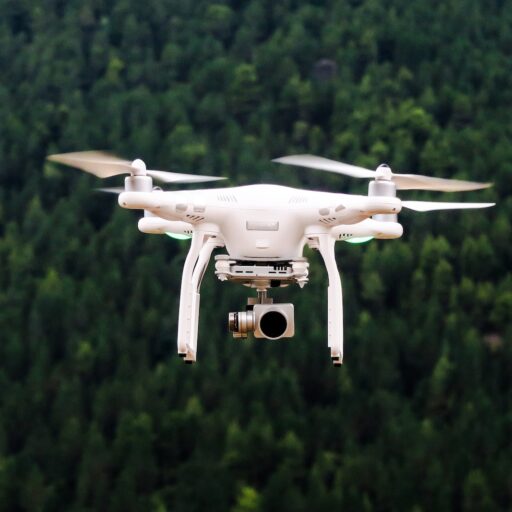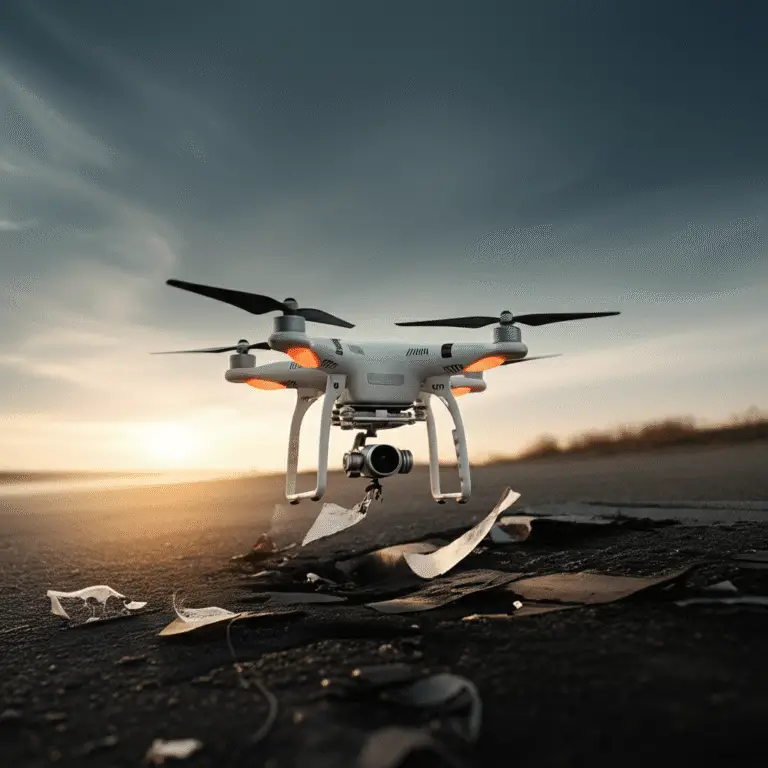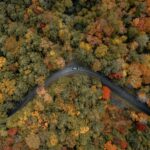Support our educational content for free when you purchase through links on our site. Learn more
15 Must-Know Safety Tips for Flying FPV Drones in 2025 🚁
Flying an FPV drone is like strapping yourself into a rocket and painting the sky with your own daring moves. But before you launch into those breathtaking dives and hairpin turns, there’s one thing every pilot must master: safety. From dodging power lines to managing battery hazards, the sky is full of invisible risks that can turn your dream flight into a nightmare.
At Drone Brands™, we’ve logged thousands of hours flying FPV drones—sometimes narrowly avoiding disaster and other times capturing cinematic magic. In this guide, we’ll share 15 essential safety tips and precautions that every FPV pilot should know in 2025. Curious about why a self-powered buzzer might save your drone’s life? Or how a spotter can be your best wingman in the sky? Stick around, because we’re unpacking all that and more, with expert insights, real-world stories, and practical advice to keep your flights smooth, legal, and fun.
Key Takeaways
- Always remove props during maintenance to avoid accidental injuries.
- Charge and store LiPo batteries safely using fireproof bags and proper rates.
- Never fly over people or crowds—it’s both dangerous and illegal.
- Use a spotter to maintain visual line of sight (VLOS) when flying FPV.
- Master your failsafe and GPS Rescue features to recover your drone in emergencies.
- Check airspace restrictions with apps like B4UFLY before every flight.
- Perform thorough pre-flight inspections including frame, props, antennas, and battery health.
- Coordinate VTX channels and frequencies when flying with others to avoid interference.
- Invest in safety gear like self-powered buzzers and quality GPS modules for peace of mind.
Ready to take your FPV flying to the next level—safely? Let’s dive in!
Table of Contents
- ⚡️ Quick Tips and Facts for Safe FPV Drone Flying
- 🚀 FPV Drone Flying: A Brief History and Evolution of Safety Practices
- 🛡️ Understanding Recreational FPV Drone Flying: What It Means for You
- 📜 Navigating the Legal Landscape: Key Laws Governing Recreational FPV Drone Flight
- ✅ Top 15 Essential Safety Tips and Precautions for FPV Drone Pilots
- 🛠️ Pre-Flight Checklist: How to Prepare Your FPV Drone for a Safe Flight
- 📡 Mastering Signal and Frequency Management to Avoid Interference
- 🌍 Choosing the Perfect Location: Where to Fly Your FPV Drone Safely and Legally
- 👀 Maintaining Visual Line of Sight (VLOS) and Why It Matters in FPV Flying
- 🧑 ✈️ FPV Freedom Coalition Safety Guidelines: Your Ultimate Recreational Flight Companion
- 📏 Understanding Key Definitions and FPVFC Safety Conventions for FPV Pilots
- ⚠️ Handling Emergencies: What to Do When Things Go Wrong in FPV Flight
- 🔋 Battery Safety and Maintenance Tips for Long-Lasting FPV Flights
- 🌐 Integrating FPV Drone Safety with Local and National Aviation Authorities
- 🧰 Recommended Gear and Tech Upgrades to Enhance FPV Flight Safety
- 📚 Conclusion: Mastering FPV Drone Safety for Fun and Responsible Flying
- 🔗 Recommended Links for FPV Drone Pilots
- ❓ Frequently Asked Questions About FPV Drone Safety
- 📖 Reference Links and Resources for FPV Drone Safety
Here is the main content for your article, crafted by the expert pilots at Drone Brands™.
⚡️ Quick Tips and Facts for Safe FPV Drone Flying
Welcome, fellow adrenaline junkies and sky-painters! Here at Drone Brands™, we’ve had our share of heart-stopping moments, near-misses, and glorious, soaring successes. Before we dive deep into the nitty-gritty of FPV drone safety, here’s a quick-and-dirty cheat sheet to keep in your back pocket. Think of it as your pre-flight espresso shot!
| Quick Tip 📝 | The Hard Truth 💥 – Props Off, Always! | A spinning prop is a tiny, carbon-fiber blender. As the first video we’ve featured in this article explains, always remove them when configuring your drone on a computer. The “one plug rule” is golden: if props are on, only the battery or the USB is plugged in. Never both. – Battery Babysitting is Mandatory. | LiPo batteries are powerful, but they’re also tiny chemical bombs if mistreated. Never leave them charging unattended. Check on them every 5-10 minutes. A fireproof LiPo bag is a cheap investment that can save your house. – Know Your Airspace. | Not all sky is created equal. Flying near airports, stadiums, or over national parks is a big no-no. Use an app like B4UFLY to check for restrictions before you even pack your gear. – GPS Rescue is Your “Get Out of Jail Free” Card. | For long-range pilots, this is non-negotiable. As FPV guru Oscar Liang notes, GPS Rescue is a “return to home” feature that can save your quad when you lose signal. Test it. Trust it. It will save you from a very long, sad walk. – Never Fly Over People. | This is a cardinal sin of FPV flying. Drones can and do fail. A quad falling from 400 feet is a serious hazard. The FPV Freedom Coalition is crystal clear on this: “Never fly over people or crowds.” It’s not just a guideline; it’s a critical rule for keeping the hobby safe and legal for everyone. –
🚀 FPV Drone Flying: A Brief History and Evolution of Safety Practices

Remember the good ol’ days? When “FPV” meant strapping a bulky camera to a rickety frame and hoping for the best? We do! The journey from those garage-hacked contraptions to the sleek, high-performance FPV drones of today has been a wild ride. And with every leap in technology, our understanding of safety has had to evolve right alongside it.
Initially, the hobby was a niche world of tinkerers. Safety was more about not losing your expensive gear than anything else. But as FPV exploded in popularity, the community quickly realized that with great power comes great responsibility.
- Early Days (The Wild West): The focus was on just getting airborne. Failsafes were rudimentary, and “long-range” was flying to the other side of a field.
- The Rise of Racing: Drone racing brought standardization and a focus on performance. This also meant more powerful drones in closer proximity, leading to the development of better video transmission protocols and the unwritten rule: never plug in on someone else’s channel!
- The Cinematic & Long-Range Boom: With the advent of better GPS modules and systems like TBS Crossfire, pilots started pushing boundaries. This is where the community, through pioneers like Oscar Liang, emphasized the need for robust safety features like GPS Rescue and self-powered buzzers.
- Regulatory Integration: As drones became mainstream, aviation authorities like the FAA stepped in. This introduced concepts like Remote ID and the TRUST test, shifting the hobby from self-policing to a co-regulated space. This is a topic we cover extensively in our Drone Laws and Regulations section.
This evolution shows a clear trend: as our drones get smarter and more capable, our safety practices must become more sophisticated and deliberate.
🛡️ Understanding Recreational FPV Drone Flying: What It Means for You
So, you just want to fly for fun? Awesome! That makes you a “recreational flyer” in the eyes of the law. But what does that actually mean? It’s not just a label; it’s a set of rules you agree to follow to keep the skies safe for everyone.
Being a recreational operator means you are flying strictly for personal enjoyment and not for any business purpose. This distinction is crucial. If you’re getting paid or flying for a company, you’re entering the world of commercial operations (Part 107 in the US), which has a different, more stringent set of rules. Exploring these avenues can lead to exciting Drone Business Opportunities.
For recreational pilots in the United States, the key requirements are:
- Pass The Recreational UAS Safety Test (TRUST): This is a simple, free online test that covers basic safety knowledge. Once you pass, you get a certificate you must have on you when flying.
- Register Your Drone (if applicable): If your drone weighs more than 250 grams (0.55 lbs), you must register it with the FAA. Most 5-inch freestyle quads fall into this category.
- Follow Safety Guidelines: You must fly according to the safety guidelines of a recognized Community-Based Organization (CBO), like the FPV Freedom Coalition.
Think of it like getting a fishing license. It’s a small step that shows you understand the rules of the pond and are committed to being a responsible member of the community.
📜 Navigating the Legal Landscape: Key Laws Governing Recreational FPV Drone Flight
Alright, let’s talk law. Don’t worry, we’ll skip the boring legal jargon and get straight to what you need to know to avoid a friendly (or not-so-friendly) chat with the authorities. The legal landscape is always changing, so be sure to check our Drone Industry News for the latest updates.
Key Regulations to Live By:
- Maintain Visual Line of Sight (VLOS): This is a big one. The law states you must be able to see your drone with your own eyes at all times. “But I’m flying FPV, I can’t see it!” you say. That’s why the rules require you to have a spotter standing next to you who can see the drone. Their job is to be your second set of eyes on the aircraft itself.
- Maximum Altitude: You must generally fly at or below 400 feet Above Ground Level (AGL). This keeps you well clear of most manned aircraft.
- Airspace Restrictions: Respect all airspace rules. This means staying away from airports (generally a 5-mile radius), stadiums, and critical infrastructure. Again, apps like B4UFLY are your best friend here.
- Remote ID Compliance: This is the new kid on the block. Most new drones that require registration must have a Remote ID module, which broadcasts the drone’s location and identification information. Think of it as a digital license plate. The FPVFC states you must “Comply with Remote ID regulations.”
Following these rules isn’t just about avoiding fines; it’s about being a good ambassador for the FPV hobby. Every pilot flying responsibly helps ensure we can all continue to enjoy this incredible technology.
✅ Top 15 Essential Safety Tips and Precautions for FPV Drone Pilots
Here’s the main event! We’ve pooled our team’s collective decades of flight experience and combined it with wisdom from across the FPV community to bring you the ultimate safety checklist.
-
Props Off During Maintenance. No Exceptions. ❌ We can’t stress this enough. As highlighted in the featured video, an accidental motor spin-up on your workbench can turn your day from fun to frantic in a millisecond. If you’re plugging into Betaflight, your props should be in a different zip code.
-
Become a Battery Guru. 🔋 Never, ever leave your LiPo or Li-Ion batteries charging unattended. Charge them at a safe “1C” rate (e.g., a 1500mAh battery charges at 1.5 amps) in a fire-resistant bag. Store them at a storage charge (around 3.8v per cell) to prolong their life and reduce risk.
-
People are Not Targets. 🎯 This is a hard and fast rule. A drone failure can cause it to fall out of the sky like a “missile.” Always fly in areas where you can be certain you won’t endanger anyone on the ground. The FPVFC is clear: “Never fly over people or large gatherings.”
-
Respect the VTX Channels. 📡 Flying with friends is one of the best parts of FPV. Don’t ruin it by being “that pilot.” Before you plug in your drone, verbally confirm with everyone what channel you’re on. Plugging in on someone else’s frequency can instantly black out their video feed, causing a guaranteed crash.
-
The Sacred Test Hover. 🚁 After any repair, build, or even just a prop change, perform a test hover. Before taking off, arm the drone and gently test your pitch, roll, and yaw controls to ensure everything responds correctly. Then, do a small, controlled hover a few feet off the ground away from yourself and others. This simple step can prevent a “Tasmanian devil freak out” moment.
-
Master Your Failsafe and GPS Rescue. 🗺️ Your failsafe is what your drone does when it loses signal. For long-range pilots, this should always be GPS Rescue. For freestyle pilots in closer proximity, it might be to simply cut power and drop. Know how yours is configured and, as Oscar Liang strongly advises, thoroughly test your GPS Rescue mode before you rely on it miles from home.
-
Choose Your Location Wisely. 🌳 A great flight starts with a great spot. Assess the area for potential hazards: power lines, trees, bodies of water, and people. Oscar Liang points out the need to “evaluate if the location is remote enough to avoid injuring people or damaging property if the drone falls.”
-
Always Fly with a Spotter. 👀 We mentioned this in the legal section, but it bears repeating. A spotter is your direct visual link to the drone, helping you avoid obstacles you can’t see in your goggles and fulfilling the legal requirement for VLOS.
-
Pre-Flight Checks are Non-Negotiable. ✅ The FPVFC guidelines emphasize a thorough pre-flight check, including a visual inspection, battery check, and confirming a strong radio link. Don’t be lazy. A 30-second check can prevent 90% of equipment-failure crashes.
-
Understand Your Gear’s Limits. 限界 Don’t push your video or radio link to its breaking point on every flight. Digital systems like DJI O3 and Walksnail Avatar can give a crystal-clear image right up until they don’t. Pay attention to your bitrate and signal strength warnings. Analog gives you more warning with static, but you still need to know when to turn back.
-
Have an Emergency Plan. 🚨 What will you do if you lose video? Or if a motor fails? Think through these scenarios before they happen. For long-range, this means knowing how to trigger GPS Rescue manually. For freestyle, it means knowing how to disarm quickly to minimize damage.
-
Manage Your Battery for the Return Trip. ↩️ This is especially critical for long-range flight. As Oscar Liang warns, flying into a headwind on the way back requires significantly more power. An accurate current sensor is vital. A good rule of thumb is the “rule of thirds”: one-third of your battery to fly out, one-third to fly back, and one-third as a safety reserve.
-
Always Record Your DVR. ⏺️ Whether it’s on your goggles or an onboard unit, your DVR (Digital Video Recorder) footage is invaluable for finding a lost drone. If you crash, you can re-watch the last few seconds to pinpoint your location based on landmarks.
-
Invest in a Self-Powered Buzzer. 🔊 When (not if) you crash and your main battery ejects, a standard buzzer is useless. A self-powered buzzer, like a Vifly Finder 2, has its own small battery and will beep loudly for hours, leading you right to your downed quad. It’s one of the best safety investments you can make.
-
Never Say “Last Pack!” 🤫 This is a classic FPV superstition, but as the video narrator jokes, the “quad gods know.” Complacency is the enemy of safety. Treat every flight with the same level of respect and focus, whether it’s your first or your last of the day.
🛠️ Pre-Flight Checklist: How to Prepare Your FPV Drone for a Safe Flight
Confidence in the air starts with preparation on the ground. Rushing a launch is a recipe for disaster. We have a laminated version of this checklist in our flight bags. Steal this for your own!
| Category | Check Item – |—————– | ——————————————————————————————————————————————————————————————————————————————————————————————————————————————————————————————————————————————————————————————————————————————————————————————————————————————————————————————————————————————————————————————————————————————————————————————————————————————————————————————————————————————————————————————————————————————————————————————————————————————————————————————————————————————————————————————————————————————————————————————————————————————————————————————————————————————————————————————————————————————————————————————————————————————————————————————————————————————————————————————————————————————————————————————————————————————————————————————————————————————————————————————————————————————————————————————————————————————————————————————————————————————————————————————————————————————————————————————————————————————————————————————————————————————————————————————————————————————————————————————————————————————————————————————————————————————————————————————————————————————————————————————————————————————————————————————————————————————————————————————————————————————————————————————————————————————————————————————————————————————————————————————————————————————————————————————————————————————————————————————————————————————————————————————————————————————————————————————————————————————————————————————————————————————————————————————————————————————————————————————————————————————————————————————————————————————————————————————————————————————————————————————————————————————————————————————————————————————————————————————————————————————————————————————————————————————————————————————————————————————————————————————————————————————————————————————————————————————————————————————————————————————————————————————————————————————————————————————————————————————————————————————————————————————————————————————————————————————————————————————————————————————————————————————————————————————————————————————————————————————————————————————————————————————————————————————————————————————————————————————————————————— | | Physical Drone | Frame & Screws: Give it a gentle squeeze. Are all arms tight? Any loose screws? A loose screw can lead to a mid-air disassembly. Trust us, it’s not as cool as it sounds. – | | | Props: Check for nicks, bends, or stress marks. A compromised prop can shatter mid-flight. Ensure prop nuts are snug. – | | | Antennas: Are your VTX and receiver antennas securely connected and positioned correctly for optimal reception? A loose antenna is a primary cause of failsafes. – | | Electronics | Battery Voltage: Use a cell checker. Is your battery fully charged? A saggy battery can lead to a sudden loss of power. – | | | GPS Lock: If you’re flying with a GPS module, wait for a solid satellite lock before arming. The FPVFC recommends ensuring a “sufficient GPS lock before takeoff.” Without it, GPS Rescue won’t work. – | | Environment | Check Airspace: Open B4UFLY or a similar app. Are there any Temporary Flight Restrictions (TFRs) or other warnings? – | | | Scan for Hazards: Walk your flight area. Look for power lines, thin branches, and potential “blind spots” where you could lose signal. – | | | Weather Check: Is it too windy? Is rain on the way? High winds can drastically affect battery life and make your drone behave unpredictably. – |
📡 Mastering Signal and Frequency Management to Avoid Interference
Your radio and video links are the invisible threads connecting you to your drone. If they snap, you’re in a world of trouble. Understanding how these signals work is key to a safe flight.
Radio Link (Your Controls)
This is your lifeline. Modern systems like ExpressLRS (ELRS) and TBS Crossfire are incredibly robust, but not invincible.
- Frequency: Most pilots use 2.4GHz or 915MHz. 915MHz (in the US) offers better object penetration but can have larger antennas. 2.4GHz is more common globally and has smaller antennas.
- Power Output: You can often adjust the power output (e.g., 25mW to 1W). Higher power can give you more range but also drains your transmitter battery faster and can create more interference for other pilots.
- Packet Rate: For ELRS, a lower packet rate (like 150Hz or 50Hz) dramatically increases range at the cost of slightly higher latency. Oscar Liang notes that dropping to 50Hz can potentially quadruple your range.
Video Link (Your Eyes)
A clean video feed is crucial for navigation and control.
- Analog vs. Digital: Analog video degrades gracefully with static, giving you a warning when you’re reaching your limit. Digital systems like DJI and Walksnail stay clear much longer but can freeze or drop out completely with little warning.
- Channel Separation: When flying with others, ensure there is adequate separation between your video channels to prevent interference. Use a tool like an RF scanner or just communicate clearly with your group.
- Antenna Choice & Placement: The right antenna makes a huge difference. Directional (patch) antennas on your goggles can dramatically increase range in the direction you’re facing. On the drone, ensure your antenna isn’t being blocked by the carbon frame or battery.
🌍 Choosing the Perfect Location: Where to Fly Your FPV Drone Safely and Legally
“Location, location, location” isn’t just for real estate. It’s the foundation of a safe and enjoyable FPV flight.
The “No-Go” Zones ❌
- Airports: Stay at least 5 miles away from any airport unless you have specific authorization.
- Stadiums and Sporting Events: Flying over these is prohibited starting one hour before and ending one hour after the event.
- National Parks: The National Park Service has banned drone flights in all its parks to protect wildlife and preserve the natural experience.
- Critical Infrastructure: Avoid flying over power stations, prisons, or military bases. This should be common sense, but you’d be surprised.
The “Heck-Yes!” Zones ✅
- Designated Flying Fields: Many cities have AMA (Academy of Model Aeronautics) fields that are perfect for FPV. They offer a safe, controlled environment.
- Wide-Open Spaces: Think large, empty parks (check local ordinances first!), abandoned industrial areas (with permission!), or remote countryside.
- “Bando-Hunting”: Flying in and around abandoned buildings (“bandos”) is a popular part of freestyle, but it comes with its own risks. Always scout the location on foot first for hidden dangers like hanging wires, unstable structures, and… well, squatters. Get permission if it’s private property.
Before you fly, ask yourself: “If my drone fell out of the sky right now, what’s the worst thing it could hit?” If the answer is anything other than “the ground” or “a bush,” you should probably find a new spot.
👀 Maintaining Visual Line of Sight (VLOS) and Why It Matters in FPV Flying
This is one of the most debated topics in FPV, so let’s clear the air. Legally, a recreational operator must be able to see their drone at all times. In FPV, since your vision is through the drone’s camera, this requirement is fulfilled by having a Visual Observer (VO), or spotter, standing with you.
The Role of the Spotter
Your spotter isn’t just there to high-five you after a sick dive. They are an active participant in the flight with critical responsibilities:
- Collision Avoidance: They watch for other aircraft (manned or unmanned), birds, and any other potential aerial hazards.
- Situational Awareness: They keep an eye on the drone’s position relative to people, property, and obstacles on the ground.
- Emergency Assistance: If you lose video or control, they can guide you on the drone’s last known position and heading, helping you either recover or find it after a crash.
Flying without a spotter is not only against FAA regulations in most situations but also incredibly risky. You’re essentially flying blind to the world outside your camera’s narrow field of view.
🧑 ✈️ FPV Freedom Coalition Safety Guidelines: Your Ultimate Recreational Flight Companion
The FPV Freedom Coalition (FPVFC) is a Community-Based Organization recognized by the FAA. Their safety code is the gold standard for recreational FPV pilots. Following these guidelines isn’t just a good idea; it’s a requirement for flying recreationally under the law.
Their core philosophy is simple but powerful: “Prioritize safety above all else.”
Key Pillars of the FPVFC Code:
- Fly for Fun: Only fly for recreational purposes.
- Follow the Law: Adhere to all FAA regulations, including TRUST and registration.
- Stay in Sight: Maintain visual line of sight, using a spotter for FPV.
- Respect Airspace: Use apps to understand where you can and cannot fly.
- Avoid Crowds: Never fly over unprotected people or moving vehicles.
- Be Predictable: Operate your drone in a safe and responsible manner.
Think of these guidelines as the community’s collective wisdom, distilled into a simple code of conduct. Embracing them protects you, the public, and the future of the FPV hobby.
📏 Understanding Key Definitions and FPVFC Safety Conventions for FPV Pilots
FPV has its own language. Understanding these key terms will help you better understand safety guidelines and communicate with other pilots.
- AGL (Above Ground Level): This is your altitude measured directly from the ground below your drone. The 400-foot altitude limit is measured in AGL.
- BVLOS (Beyond Visual Line of Sight): Flying where neither you nor a spotter can see the drone. This is illegal for recreational pilots without a specific waiver from the FAA.
- Failsafe: A pre-programmed function that tells your drone what to do if it loses the signal from your transmitter.
- GPS Rescue: A specific type of failsafe that uses a GPS module to automatically fly the drone back towards its takeoff point.
- Spotter / Visual Observer (VO): The person standing next to an FPV pilot whose sole job is to maintain direct visual contact with the drone.
- TFR (Temporary Flight Restriction): A designated area where air travel is temporarily restricted due to hazardous conditions, special events, or security concerns.
Knowing these terms is part of being a knowledgeable and responsible pilot. It ensures that when someone at the field yells, “Watch out for that TFR!” you know to land, not to look for a new freestyle trick.
⚠️ Handling Emergencies: What to Do When Things Go Wrong in FPV Flight
Panic is the enemy. The key to handling an in-flight emergency is to have a plan before you take off.
| Emergency Situation 🚨 | Your Action Plan 👨 🚒 – | | Total Video Loss (Black Screen) | Don’t Panic! Immediately tell your spotter. If you’re close, they can guide you back. If you’re far away, flick your failsafe switch to engage GPS Rescue. Do not try to fly blind. – | | Control Link Loss (Failsafe) | Your drone should automatically trigger its failsafe procedure. If it’s GPS Rescue, just wait for it to return. If it’s set to drop, note its last location and begin your search. – | | Motor or Prop Failure (Mid-Air) | If you suddenly hear a change in sound and the drone starts to wobble or tumble, you’ve likely lost a motor or prop. Your only move is to disarm immediately to stop the props from spinning. This minimizes damage to the drone and anything it might hit on the ground. – | | Sudden Low Battery Warning | The dreaded “Land Now” warning. Don’t try to squeeze out another 30 seconds. Obey the warning and bring it in for a controlled landing immediately. Pushing a battery too far can cause it to die completely, resulting in a crash and potentially permanent damage to the battery. – |
🔋 Battery Safety and Maintenance Tips for Long-Lasting FPV Flights
Your batteries are the heart of your drone. Treat them with the respect they deserve, and they’ll give you powerful, consistent performance. Mistreat them, and they can be a serious fire hazard.
Charging Best Practices:
- ✅ Use a Quality Charger: Don’t cheap out. A good balance charger like those from ISDT or Hota is a critical investment.
- ✅ Charge at 1C: As mentioned in the video, even if a battery says it can be charged faster, sticking to a 1C rate is safer and better for the battery’s longevity.
- ✅ Always Balance Charge: This ensures all the cells in the battery are at an equal voltage, which is crucial for health and safety.
- ❌ Never Leave Them Unattended: We’re saying it a third time because it’s that important. A charging battery is a potential hazard. Stay present.
- ✅ Use a LiPo Bag: Charge and store your batteries in a fire-resistant bag or an ammo can.
Storage and Handling:
- Storage Voltage is Key: Never store batteries fully charged or fully depleted. After flying, charge or discharge them to a storage voltage of ~3.80-3.85 volts per cell.
- Inspect for Damage: Before and after every flight, check for puffing, dents, or damaged wrappers. A puffy LiPo is a retired LiPo. Dispose of it properly.
- Don’t Puncture Them: This can cause a violent and fiery reaction. Handle with care.
🌐 Integrating FPV Drone Safety with Local and National Aviation Authorities
Being a responsible pilot means being part of the larger aviation ecosystem. This isn’t about being policed; it’s about being a legitimate and respected user of the national airspace.
- Get Your TRUST Certificate: It’s your entry ticket to legal recreational flight in the US. Keep a digital or physical copy with you.
- Register Your Aircraft: If it’s over 250g, register it on the FAA DroneZone. Label your drone with your registration number.
- Use LAANC for Airspace Authorization: If you need to fly in controlled airspace (like near a smaller airport), LAANC (Low Altitude Authorization and Notification Capability) is an automated system that can give you near-instant approval through apps like Aloft or AirMap.
- Stay Informed: Laws change. Follow the FAA, FPVFC, and reputable sources like our own Drone Laws and Regulations page to stay up-to-date.
By engaging with these systems, you’re not just following rules; you’re actively demonstrating that the FPV community is safe, responsible, and deserves its place in the sky.
🧰 Recommended Gear and Tech Upgrades to Enhance FPV Flight Safety
While skill is paramount, the right gear can provide a crucial safety net. Here are some upgrades our team at Drone Brands™ swears by. Many of these can be found in our Drone Brand Guides.
Must-Have Safety Gear:
- Self-Powered Buzzer: This is at the top of the list for a reason. It will save you from losing your drone.
- VIFLY Finder 2: Amazon | Walmart | VIFLY Official Website
- GPS Module: Essential for long-range and highly recommended for all pilots. It enables Return-to-Home and provides coordinates to find a lost quad.
- Matek M10Q-5883: Amazon | Matek Systems Official Website
- Holybro M10 GPS: Amazon | Holybro Official Website
- Reliable Control Link: A robust link is your primary safety feature.
- TBS Crossfire: Amazon | Team BlackSheep Official Website
- ExpressLRS (ELRS): Amazon | Walmart
Nice-to-Have Safety Enhancements:
- Fireproof LiPo Bag/Box: Cheap insurance for your home and gear.
- Prop Guards: Especially useful for beginners or those flying indoors or in tight spaces. Check out our guides on Beginner Drones for models that often include these.
- High-Quality Goggle Antennas: A better video signal means better situational awareness.
- Lumenier AXII HD 2: Amazon | GetFPV Official Website
- TrueRC X-AIR 5.8 MK II: Amazon | TrueRC Official Website
Investing in safety gear isn’t the most glamorous part of FPV, but it’s what allows you to fly with confidence and push your skills, knowing you have a backup plan when things go sideways. And trust us, they eventually always go sideways. The question is, will you be prepared when they do?
📚 Conclusion: Mastering FPV Drone Safety for Fun and Responsible Flying

Flying FPV drones is nothing short of magical — a blend of adrenaline, artistry, and technology that lets you paint the sky with your own unique strokes. But with great power comes great responsibility. As we’ve explored, safety isn’t just a checklist; it’s a mindset that every pilot must embrace to protect themselves, the public, and the future of this incredible hobby.
From the basics of pre-flight checks and battery care to the critical importance of spotters, failsafes, and respecting airspace laws, the path to becoming a skilled FPV pilot is paved with thoughtful preparation and continuous learning. The FPV Freedom Coalition’s guidelines and the insights from seasoned pros like Oscar Liang remind us that no flight is worth risking safety — whether that means avoiding flying over people, respecting no-fly zones, or mastering your gear’s limits.
Remember the question we teased earlier: “If my drone fell out of the sky right now, what’s the worst thing it could hit?” Now you know the answer — and the steps to make sure that answer is always as safe as possible.
So, gear up, study the rules, practice your skills, and fly smart. Your drone adventures will be safer, more enjoyable, and the sky will remain a playground for all of us.
🔗 Recommended Links for FPV Drone Pilots
Ready to upgrade your gear or dive deeper into FPV safety? Here are some of our top picks and trusted resources:
Essential Safety Gear & Tech
-
VIFLY Finder 2 Self-Powered Buzzer:
Amazon | Walmart | VIFLY Official Website -
Matek M10Q-5883 GPS Module:
Amazon | Matek Systems Official Website -
Holybro M10 GPS Module:
Amazon | Holybro Official Website -
TBS Crossfire Long-Range Radio System:
Amazon | Team BlackSheep Official Website -
Lumenier AXII HD 2 Antenna (Goggles):
Amazon | GetFPV Official Website -
TrueRC X-AIR 5.8 MK II Antenna:
Amazon | TrueRC Official Website
Recommended Reading
- FPV Flight Dynamics by Christian Mollica — A comprehensive guide to FPV flying techniques and safety.
- The Drone Pilot’s Handbook by Adam Juniper — Covers drone laws, safety, and best practices for all levels.
❓ Frequently Asked Questions About FPV Drone Safety
How can I ensure my FPV drone flights are safe in crowded areas?
Short answer: Don’t fly over crowds or densely populated areas.
Detailed explanation: The FPV Freedom Coalition and FAA guidelines are crystal clear: flying over people or large gatherings is strictly prohibited due to the risk of injury from a falling drone. If you must fly near people, always maintain a safe lateral distance and altitude, and never fly directly overhead. Use open spaces or designated flying fields to keep everyone safe.
What pre-flight checks should I perform before flying an FPV drone?
- Physical inspection: Check frame integrity, screws, and props for damage or looseness.
- Battery health: Ensure batteries are fully charged, balanced, and undamaged.
- Antenna connections: Confirm all antennas are secure and properly oriented.
- GPS lock: Wait for a solid GPS fix if your drone uses GPS features.
- Radio link: Verify a strong transmitter-to-drone connection.
- Environment scan: Look for obstacles, hazards, and airspace restrictions.
Performing these checks reduces the risk of mid-flight failures and accidents.
Are there legal regulations I need to follow when flying FPV drones?
Yes. Recreational FPV pilots must:
- Pass the TRUST test and carry the certificate.
- Register drones over 250 grams with the FAA.
- Maintain visual line of sight with a spotter.
- Fly below 400 feet AGL and avoid restricted airspace.
- Comply with Remote ID requirements.
Always check local laws as they can vary by country and region.
What equipment is essential for safe FPV drone flying?
- Reliable radio control system (e.g., ExpressLRS, TBS Crossfire).
- GPS module for Rescue and Return-to-Home features.
- Self-powered buzzer for crash recovery.
- Quality LiPo charger and fireproof charging bag.
- Spotter to maintain visual line of sight.
- High-quality antennas for both video and control links.
How do weather conditions affect the safety of FPV drone flights?
Weather plays a huge role:
- Wind: High winds drain batteries faster and make control difficult.
- Rain or moisture: Can damage electronics and cause shorts.
- Fog or low visibility: Increases risk of losing orientation and visual contact.
- Temperature extremes: Cold reduces battery performance; heat can cause overheating.
Always check weather forecasts and avoid flying in adverse conditions.
What are the best practices for maintaining line of sight while flying FPV drones?
- Always have a spotter who can see the drone directly.
- Choose open flying locations with minimal obstacles.
- Use ground stations or directional antennas to improve signal and awareness.
- Plan your flight path to avoid blind spots like behind trees or buildings.
- Keep the drone within a reasonable distance and altitude.
How can I prevent signal interference during FPV drone flights?
- Coordinate VTX channels with other pilots to avoid overlap.
- Use high-quality antennas and ensure proper placement.
- Avoid flying near sources of RF noise like power lines or Wi-Fi hotspots.
- Use diversity receivers and directional antennas for better signal stability.
- For radio control, choose robust systems like ExpressLRS or TBS Crossfire with frequency hopping.
What should I do if I lose video or control signal mid-flight?
- Immediately engage your drone’s failsafe or GPS Rescue mode if available.
- Communicate with your spotter to locate the drone visually.
- Do not attempt to fly blindly; wait for signal recovery or initiate Return-to-Home.
- After landing or crash, use your self-powered buzzer and DVR footage to locate your drone.
📖 Reference Links and Resources for FPV Drone Safety
- FPV Freedom Coalition Safety Guidelines
- Oscar Liang’s Guide to Long Range FPV Flying
- FAA Recreational UAS Safety Test (TRUST)
- B4UFLY Airspace Awareness App
- Team BlackSheep (TBS) Official Website
- ExpressLRS Project
- Matek Systems Official Website
- Holybro Official Website
- VIFLY Official Website
- GetFPV
- TrueRC Official Website
- FAA DroneZone Registration
- Aloft LAANC Authorization
- AirMap LAANC Authorization
Fly safe, fly smart, and keep those skies open for all of us! 🚁✨







